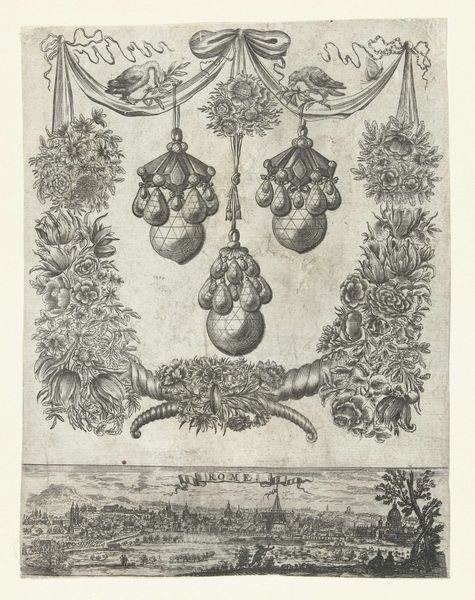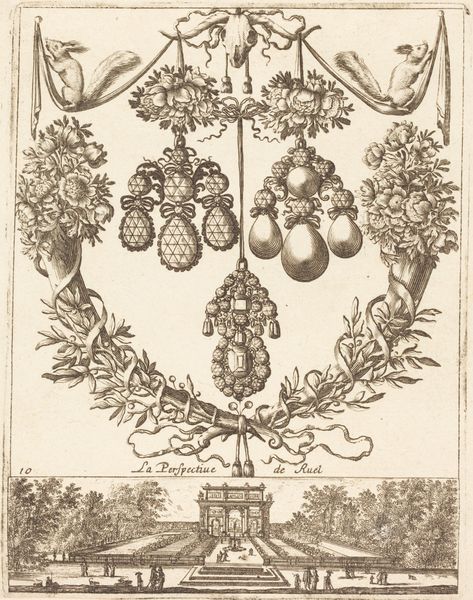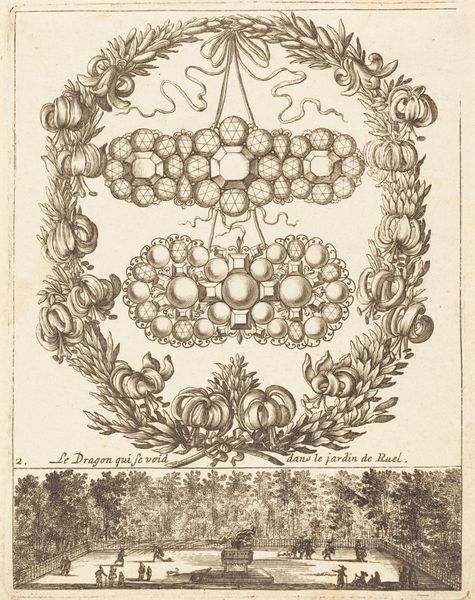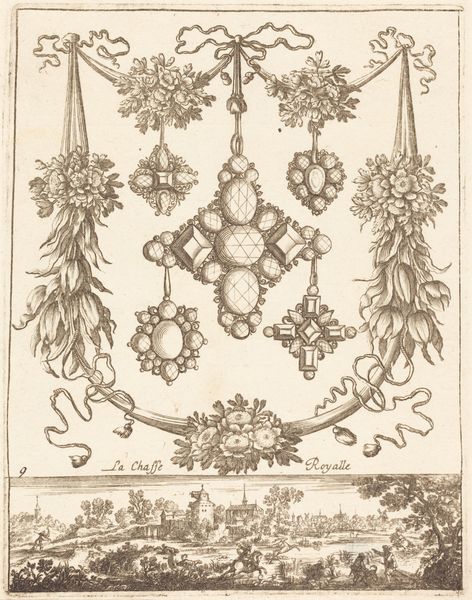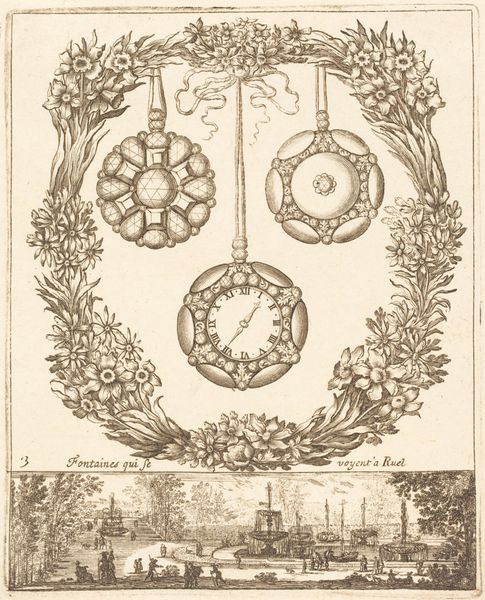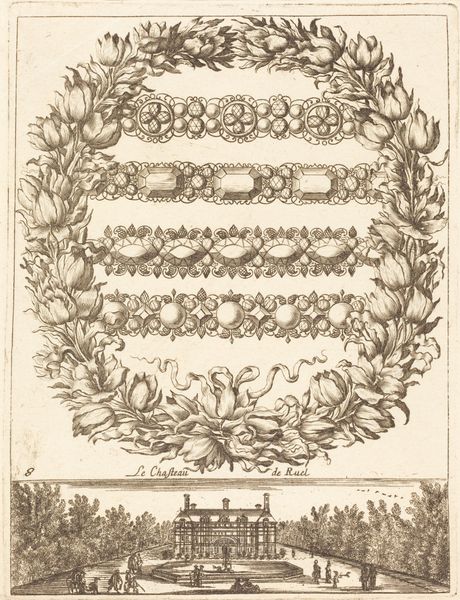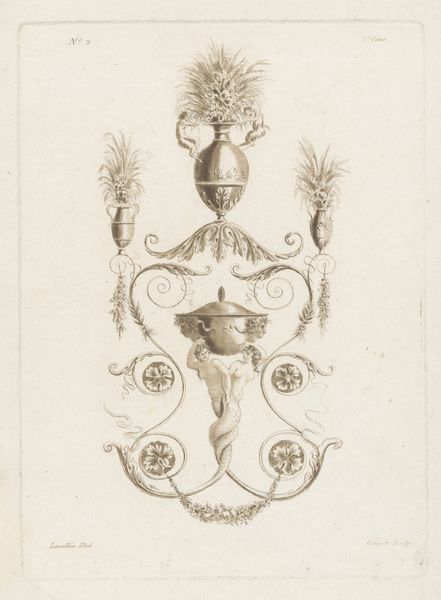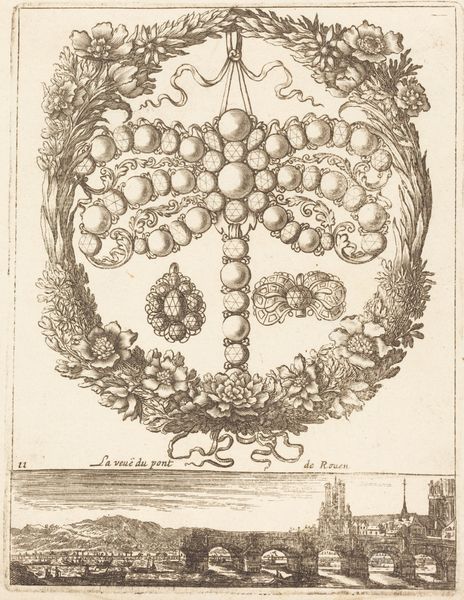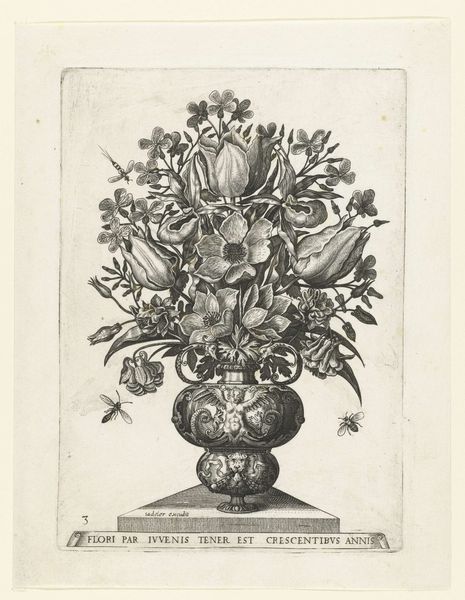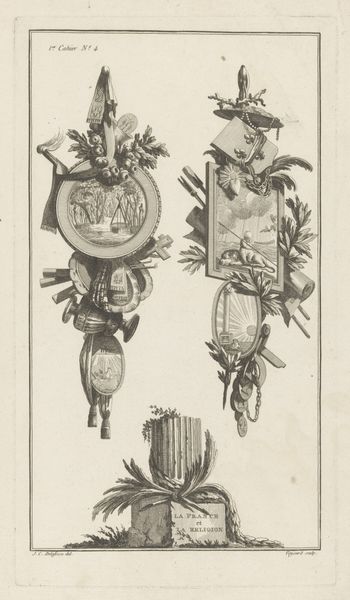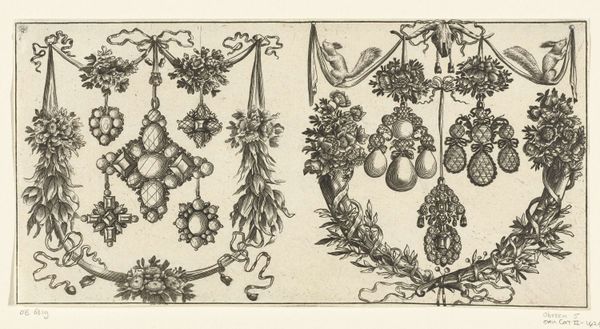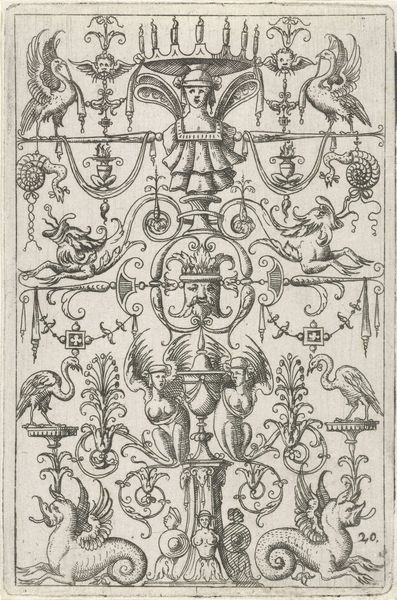
print, engraving
#
pen drawing
# print
#
landscape
#
line
#
engraving
Copyright: National Gallery of Art: CC0 1.0
François Le Febvre's "Rome," made sometime between the late 16th and early 17th century, is an engraving that offers us a glimpse into the cultural and institutional values of its time. The image presents a juxtaposition of the earthly and the aspirational, typical of much art produced during the Counter-Reformation. At the bottom, we see the city of Rome itself, a panorama of its famous skyline, while the upper portion of the image is filled with decorative ornamentation: floral garlands, ribbons, and pendants. This use of elaborate decoration served to enhance the status of the patron and underscore the importance of ceremony and display, reflecting the values of the powerful elite that controlled Rome at the time. As art historians, our task is to connect these aesthetic choices to broader social trends, examining, for example, how the Catholic Church's patronage influenced artistic production or how shifts in economic power affected the art market. We might consult period documents, architectural plans, or even fashion plates to deepen our understanding of this complex historical moment.
Comments
No comments
Be the first to comment and join the conversation on the ultimate creative platform.
